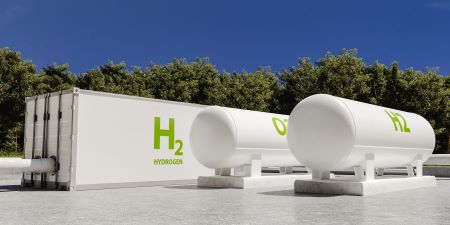Federal government is providing strong support for Canada’s hydrogen industry but more public awareness needed

NOTE: This is Part 2 of a two-part series about the federal government’s progress report on Canada’s hydrogen strategy. Part 2 looks at initiatives from the government to support hydrogen development and production in Canada. Part 2 also includes recommended strategic priorities to guide collective actions during the next reporting period (2024 to 2026). Part 1, published on July 9, examined the current state of Canada’s hydrogen industry, including end-use projects and hydrogen hubs, and the findings of several modelling initiatives that examined the future role of low-carbon hydrogen within Canada’s overall energy system.
Since launching Canada’s hydrogen strategy in 2020, the federal government has implemented several initiatives and programs to support hydrogen development, production and use, including exports:
- Clean Hydrogen Investment Tax Credit: A refundable investment tax credit for investments made in clean hydrogen production based on the life cycle carbon intensity of hydrogen. The credit will apply to both electrolysis projects and natural gas reforming projects if emissions are abated with carbon capture utilization and storage.
- Clean Electricity Investment Tax Credit or Clean Technology Investment Tax Credit: Offers a credit of up to 30 percent on electricity generation systems, such as wind or solar, or offers a credit of up to 30 percent for new machinery to manufacture technologies, including manufacturing of electrolyzers, which can lower the costs of hydrogen project equipment manufactured in Canada
- Investment Tax Credit for Carbon Capture, Utilization and Storage: Offers a 37.5-percent to 60-percent credit on the equipment necessary to capture, transport and store carbon emissions, benefitting facilities producing hydrogen from natural gas.
Other broader federal support for the low-carbon hydrogen value chain includes:
- $1.5-billion Clean Fuels Fund has the objective to increase domestic production of clean fuels, including hydrogen and synthetic fuels. As of October 2023, the government had selected about 10 hydrogen production projects that will receive support totalling over $300 million.
- Strategic Innovation Fund – Net Zero Accelerator announced funding for two hydrogen projects: the Air Products Net Zero Hydrogen Energy complex in Edmonton ($300 million in support), and AVL Fuel Cell Canada’s global hydrogen fuel cell R&D facility in Burnaby, B.C. ($15 million).
- $15-billion Canada Growth Fund is designed to offset some of the risks that may deter private capital from flowing into clean energy and technology. One of the strategic objectives of the fund is to accelerate the deployment of low-carbon hydrogen.
- Canada Infrastructure Bank (CIB) provides financing for decarbonization projects:
The CIB launched a $500-million Charging and Hydrogen Refuelling Infrastructure Initiative to help remove barriers to the adoption of zero-emission vehicles.
In March 2023, the CIB confirmed that it would provide $277 million in financing to the Varennes, Que. biorefinery and hydrogen electrolysis project.
The CIB also provides loan funding for front-end engineering and design expenditures for hydrogen production projects through its Project Acceleration program.
- Zero Emission Vehicle (ZEV) Infrastructure Program provides $680 million in funding to owners/operators of ZEV infrastructure, delivery organizations and Indigenous organizations to deploy electric vehicle chargers and hydrogen refuelling stations in Canada. The program targets the deployment of 30 hydrogen stations by 2029.
The federal government has also introduced a suite of programs to accelerate zero-emission transportation, providing funding opportunities for the deployment of hydrogen solutions. These include:
- Zero Emission Transit Fund provides $2.75 billion in funding to public transit and school bus operators in Canada to accelerate the adoption of zero-emission buses.
- $550-million Incentives for Medium and Heavy-Duty Zero-Emission Vehicles provides up to $200,000 per vehicle for businesses and communities across the country that make the switch to medium and heavy-duty zero-emission vehicles.
- Zero-Emission Trucking Program, which will use $75 million in funding to accelerate the safe deployment of medium and heavy-duty zero-emission vehicles.
- Canadian Federation of Municipalities’ $1-billion Green Municipal Fund, which can fund grants of up to $500,000 to municipalities for zero-emission vehicles and alternative fuel fleet conversion pilot projects.
Funding is also available from Canada’s Regional Development Agencies, which have provided over $30 million to date for various hydrogen opportunities, including hydrogen hub development plans and electrolyzer manufacturing facilities.
Regulatory changes and international initiatives
The Government of Canada also has released regulatory updates that can drive demand for low-carbon hydrogen and lower emissions, including:
Clean Fuel Regulations (CFR) require fossil-based transportation fuels to reduce carbon intensity by 15 percent (compared to 2016) by 2030. The regulations establish a credit market for regulated parties (producers and importers). Credits are proportional to the carbon intensity of the hydrogen that is used. The following uses of hydrogen can create CFR credits:
- Hydrogen used as a fuel or feedstock in the production of liquid fossil fuels.
- Hydrogen used as a fuel or feedstock at a low-carbon-intensity fuel production facility.
- Hydrogen used as a fuel in stationary applications (for example, hydrogen injected in natural gas pipelines). This use of hydrogen creates gaseous credits, which can only be used by regulated parties to satisfy up to 10 percent of their annual obligation.
- Hydrogen supplied for use in transportation (for example, refuelling hydrogen fuel-cell vehicles).
Canada’s approach to carbon pollution pricing creates an incentive for projects that use low-carbon hydrogen, especially in industry or transport. For example, hydrogen could support the decarbonization of industry through high-temperature heat applications (e.g. steel and iron production) and as a direct input in heavy oil upgrading and the chemical sector (e.g. ammonia for fertilizers).
Both the Clean Fuel Regulations and Canada’s approach to carbon pollution pricing incentivize Canada’s existing producers and users of carbon-intensive hydrogen, such as in the oil refining, petrochemical, or fertilizer sectors, to reduce the carbon intensity of their hydrogen or transition to low-carbon hydrogen.
Canada’s proposed methane regulations will also contribute to a lower lifecycle carbon intensity for hydrogen derived from natural gas. The regulations will reduce upstream oil and gas methane emissions through the introduction of emission standards and work practices to inspect sites and make repairs.
When it comes to exports and international competitiveness, Atlantic Canada’s abundant and untapped wind resources and immediate proximity to Atlantic shipping routes will allow wind-to-hydrogen electrolysis projects to become reliable suppliers of clean hydrogen to Germany and other European markets.
Germany has announced its intention to import as much as 50 percent to 70 percent of its hydrogen demand by 2030 (approximately 3 to 4 million tonnes of hydrogen annually) as it looks to decarbonize hard-to-abate industrial sectors that cannot be electrified and to cut dependence on imported fossil fuels from Russia.
In Western Canada, export projects deriving ammonia from natural gas are looking to export to Japan, South Korea, and Asian markets, largely as a means to reduce emissions from coal power.
To advance the clean hydrogen export opportunity, Canada is actively engaging with its allies and signing commitments to support energy security through the production and export of hydrogen and its derivatives, including:
- 2021 memorandum of understanding between Canada and the Netherlands on cooperation in the field of hydrogen energy, which seeks to advance the development of export-import corridors and enhance cooperation on topics such as standards, certification, investment, trade and technologies.
- 2021 memorandum of understanding between Natural Resources Canada and the U.S. Department of Energy on energy cooperation, which aims to jointly identify green corridors and cross-border hydrogen hubs and accelerate efforts to develop and standardize a common global methodology for carbon intensity.
- August 2022 Joint Declaration of Intent to establish a Canada-Germany Hydrogen Alliance, which seeks to create a transatlantic supply chain for hydrogen before 2030.
- May 2023 memorandum of understanding with South Korea on cooperation in critical mineral supply chains, the clean energy transition and energy security, which features hydrogen, its derivatives and enabling technologies as one of the key areas of cooperation.
- Canada-Japan Energy Policy Dialogue, active since 2019, which signed an updated Action Plan for 2023 to 2025 where ammonia was added to the hydrogen pillar. Under this forum, Canada and Japan aim to explore market opportunities and ways to bolster cooperation, including on the export of low-carbon ammonia from Canada to Japan to help decarbonize Japan’s power sector
- inclusion of hydrogen in the Canada-EU High-Level Energy Dialogue, active since 2007, where Canada and the EU collaborate on mutual goals of energy security and the clean energy transition. A hydrogen action plan was signed in March 2023 to cooperate on supply chain analyses and trade and investment missions to EU members.
Strategic priorities to guide collective future actions
The progress report identified several strategic priorities to guide collective actions during the next reporting period (2024 to 2026):
- De-risk high-impact production projects of low-carbon hydrogen.
First-mover production projects like Air Liquide’s 20-megawatt (MW) or Enbridge’s 2.5-MW Markham electrolyzers are operational and other major projects have received environmental approval or are under construction. But other projects are still under development.
While these proposed projects are expected to make use of the forthcoming Clean Hydrogen Investment Tax Credit or other supports identified in this progress report, there remains a long road ahead for many projects before regulatory approvals, final investment decisions and construction are completed.
Ongoing risks include securing offtake agreements or having sufficient confidence in future demand and navigating potential labour or supply chain constraints in the build-out of the project.
A key step to realizing Canada’s potential is to de-risk high impact production projects so that they can move ahead. This is important for projects that provide domestic greenhouse gas emission reductions or significant economic benefits, such as job creation or exports.
It is also important for projects with regional benefits or those that have the potential to establish new supply chains or drive technological innovation. Maintaining a competitive policy framework will be an important action by Canada to de-risk high-impact production projects.
Other actions include regulatory streamlining (where appropriate), carbon contracts for difference, continuing to support innovation to reduce the cost of key technologies, unlocking infrastructure or safety considerations (such as transportation of ammonia by unit trains on rail) and implementing the Clean Hydrogen Investment Tax Credit.
In regions without untapped wind or renewable resources, electrolysis projects will need Canada to continue to decarbonize its electricity grid and scale up new clean electricity generation, consistent with Canada’s forthcoming Electricity Strategy and electrification objectives.
As these initial low-carbon hydrogen production projects move forward, they will support Canada’s long-term goal, as specified in the Hydrogen Strategy, of continuing to lower the life cycle carbon intensity of hydrogen production projects to maximize hydrogen’s decarbonization and international energy security potential.
- Achieve scalable hubs and strategic corridors, targeting end-uses with the greatest potential.
Hydrogen hubs, which are regional networks of hydrogen producers and consumers linked by connective infrastructure, are developing across Canada, but many are still at an early stage. They can also be regional enabling environments, such as ongoing coordination in Atlantic Canada on wind-hydrogen export projects and infrastructure.
Hubs will benefit from support to understand the market and GHG reduction opportunities in their regional area and from continuing to build connections among supply and demand projects to become self-sustaining and achieve the scale necessary to efficiently lower costs.
Strategic hydrogen corridors, along with hubs, can form the backbone of the future hydrogen sector. Corridors can be land-based, such as between Prince George's and Vancouver's hubs or the Windsor-Montreal freight corridor or marine-based export and trade corridors from ports to other domestic or international hubs.
Canada's hubs-and-corridors strategy will analyze the most promising areas and regions for investment in hydrogen hubs and corridors.
Hydrogen will play a key role in decarbonizing hard-to-abate sectors, especially where alternatives are unavailable or limited.
This evidence currently points to some end-use applications for low-carbon hydrogen being more mature or having more potential than others, including the medium and heavy-duty vehicle transportation sector (for example, long-haul freight trucking and urban transit), heavy industry (such as steel, chemical and refining) and blending, especially where blending could potentially pave the way for full-hydrogen replacement of natural gas, where appropriate.
Focusing on the near-term deployment of hydrogen in these applications, especially as part of hubs and corridors, will support the establishment of a domestic market, and show how hydrogen can provide GHG reductions, in areas that would otherwise be costly to decarbonize.
Need for codes, standards, market data and public awareness
- Develop codes and standards.
Developing codes and standards continues to be important for the deployment of hydrogen technologies, fuel cells and refuelling infrastructure, providing investor certainty across the value chain.
Codes and standards will also be important for furthering the understanding of hydrogen leakage as relating to codes and standards to ensure net GHG benefits of hydrogen use and to drive best practices.
The development of codes and standards across the vast and varied hydrogen value chain is a multi-year process and is led by organizations largely independent of government. It is a patient process that requires persistence and coordination among multiple levels of government, industry and utilities, as well as international coordination, to ensure Canadian standards are effectively harmonized with international requirements for safety, performance and reliability.
- Raising awareness and gathering market data.
When the Hydrogen Strategy for Canada was released in December 2020, it was intended as a call to action to all stakeholders in the hydrogen value chain on the opportunity that hydrogen presents. This call was heeded following the launch of the implementation framework and subsequent mobilization across various sub-sectors of the economy.
However, average citizens have limited understanding of the potential of hydrogen as a low-carbon energy opportunity to decarbonize and support economic growth in households in Canada. This lack of awareness can result in low confidence in the safety and transformative potential of hydrogen.
Delaying action on hydrogen awareness will inevitably become a bottleneck in gaining social acceptance. While there have been a large number of reports and studies generated over the past years, including by the working groups under the Hydrogen Strategy, more efforts need to be made to ensure their conclusions are broadly disseminated.
Governments, academia and industry need to actively raise awareness to facilitate public acceptance of low-carbon hydrogen, especially in the areas identified as strategic priorities such as de-risking production, end use and hubs’ projects.
Successful examples range from information sessions by transit authorities displaying fuel cell buses for citizens to learn about hydrogen fuel cells, to support for hydrogen blending projects as a form of passive decarbonization requiring limited public adaptation.
Expectations also continue to grow for improved market data, expertise, projections, analysis and knowledge of low-carbon hydrogen, especially as scrutiny over its potential role for decarbonization increases or as further policy mechanisms are taken into consideration.
Modelling projections need to be continually refined and updated to likewise take into account market changes and technological innovations as they arrive.
While a new Statistics Canada survey will report on low-carbon hydrogen production and be available by 2025, it will continue to be a priority for governments and industry to ensure low-carbon hydrogen market data and knowledge is thorough and robust, and for new government modelling to continuously improve, such as to include provincial granularity, economic market forecasting outside of a net-zero scenario and proper incorporation of the impact of recently announced measures like the Clean Hydrogen Investment Tax Credit and others.
The federal government says its progress report “confirms that hydrogen continues to have a role to play in meeting global energy needs in the context of energy security, energy transition and the broader climate imperative.”
Canada’s low-carbon hydrogen produced for export will contribute to sustainable green job creation, international energy security and global emissions reductions, the government says.
“In Canada’s net-zero climate objectives, low-carbon hydrogen will supplement electrification and other carbon mitigation approaches by helping to decarbonize hard-to-abate sectors where electrification alone would be less economical or technically unfeasible.”
R$
| Organizations: | |
| People: | |
| Topics: |
Events For Leaders in
Science, Tech, Innovation, and Policy
Discuss and learn from those in the know at our virtual and in-person events.
See Upcoming Events
You have 0 free articles remaining.
Don't miss out - start your free trial today.
Start your FREE trial Already a member? Log in
By using this website, you agree to our use of cookies. We use cookies to provide you with a great experience and to help our website run effectively in accordance with our Privacy Policy and Terms of Service.





.jpg)